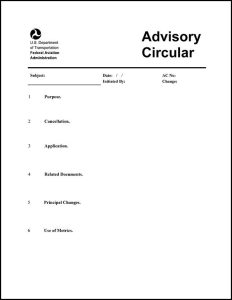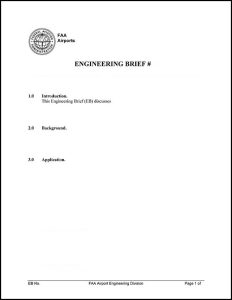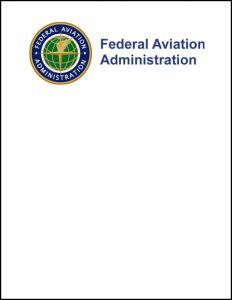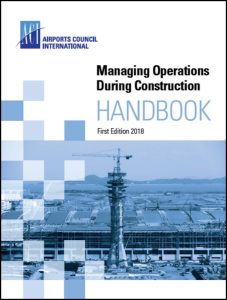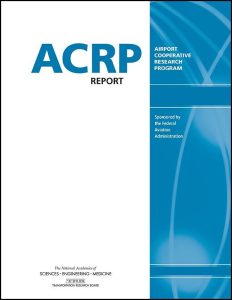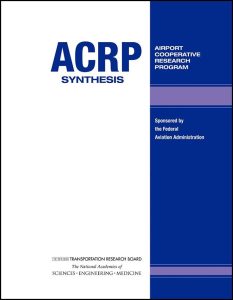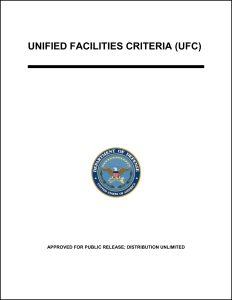To narrow the library of airside resources, use the filter boxes or airport map below or search box above.
Click an item below to expand.
Resources Matching Your Search
2017
This advisory circular (AC) establishes a common, uniform definition of critical aircraft for all deliberations of the FAA Office of Airports, inclusive of planning and environmental, design and engineering, and financial decision-making regarding airport development.
2012
Engineering Brief (EB) 89 provides clarification for taxiway designation convention standards contained in FAA Advisory Circular (AC) 150/5340-18F: Standards for Airport Sign Systems. First, on February 9, 2011, the Office of Airport Safety and Standards distributed a memorandum entitled "Taxiway Naming Conventions" that provided additional information and clarification on taxiway designation convention. Second, a recommendation posted on the FAA Idea Hub, Idea 2320, "Naming airport ramps and aprons," raised concerns about taxiways that have the same names as airport ramps and aprons, as these taxiways have the potential to cause communication problems between pilots and air traffic controllers.
2017
This advisory circular (AC) sets forth guidelines for operational safety in airports during construction. This AC assists airport operators in complying with Title 14 Code of Federal Regulations (CFR) Part 139, Certification of Airports. For those certificated airports, this AC provides one way, but not the only way, of meeting those requirements. The use of this AC is mandatory for those airport construction projects receiving funds under the Airport Improvement Program (AIP). Chapters include planning an airfield construction project, construction safety phasing plans (CSPP), and guidelines for writing a CSPP. Included in the appendices are a safety and phasing checklist and a construction project daily safety inspection checklist.
2022
This FAA presentation discusses basic concepts in taxiway design geometry from Advisory Circular 150/5300-13B, Airport Design. Airport planners and designers must understand these concepts to design a safe and efficient taxiway system.
2022
This FAA presentation discusses basic concepts in taxiway design for end-around taxiways from Advisory Circular 150/5300-13B, Airport Design. Airport planners and designers must understand these concepts to design a safe and efficient taxiway system.
2023
This FAA presentation discusses basic concepts in taxiway design for high speed exit taxiways from Advisory Circular 150/5300-13B, Airport Design. Airport planners and designers must understand these concepts to design a safe and efficient taxiway system.
2022
This FAA presentation discusses basic concepts in taxiway design using taxiway design groups from Advisory Circular 150/5300-13B, Airport Design. Airport planners and designers must understand these concepts to design a safe and efficient taxiway system.
2020
This desk reference provides explanatory guidance for environmental impact analysis performed to comply with Council on Environmental Quality (CEQ) Regulations for Implementing the Procedural Provisions of the National Environmental Policy Act (CEQ Regulations) (40 Code of Federal Regulations (CFR) parts 1500-1508); U.S. Department of Transportation (DOT) Order 5610.1C, Procedures for Considering Environmental Impacts; and Federal Aviation Administration (FAA) Order 1050.1F Environmental Impacts: Policies and Procedures.
2020
Engineering Brief (EB) 100A addresses the FAA's recent completion of a safety risk assessment of the proposed modifications to the instrument departure surface described in FAA Order 8260.3, United States Standard for Terminal Instrument Procedures (TERPS). This EB provides approval for airport operators to implement the new departure surface for locating holding positions on the airfield.
2018
Construction activities can have a variety of impacts on the daily operations of an airport. To address this issue, a working group of the ACI World Safety and Technical Standing Committee developed the Managing Operations During Construction Handbook, which consists of best practices and case studies. The focus of this manual is on construction projects that affect the safety and efficiency of airside operations. The handbook presents a summary of the issues that airport operators should consider in developing management plans for operations during construction works. This handbook is for reference by airport operators, project managers, security agencies, aircraft operators, air navigation service providers, civil aviation authorities, contractors, and local communities. This resource is available from the ACI store for $180 for members and $1,000 for non-members. There is also a short course on the topic available from ACI for $95.
2020
This advisory circular (AC) describes the standards and provides guidance in the development of a surface movement guidance and control system (SMGCS) plan for U.S. airports, in which scheduled air carriers are authorized to conduct operations when the visibility is less than 1,200 feet runway visual range (RVR). An SMGCS plan facilitates the safe movement of aircraft and vehicles on the airport by establishing more rigorous control procedures and requiring enhanced visual aids.
2015
This advisory circular (AC) provides guidance for the preparation of master plans for airports that range in size and function, from small general aviation to large commercial service facilities. The intent of this AC is to foster a flexible approach to master planning that directs attention and resources to critical issues. The scope of each master plan must be tailored to the individual airport under evaluation.
2015
This advisory circular (AC) provides guidance for airport sponsors in the selection and engagement of architectural, engineering, and planning consultants. It also discusses services that normally would be included in an airport grant project, types of contracts for these services, contract format and provisions, and guidelines for determining the reasonableness of consultant fees.
2019
ACRP Report 16, second edition, is designed to help airport practitioners, owners, operators, managers, and policymakers of small airports, who may have varying degrees of experience and backgrounds, to fulfill their responsibilities in such areas as financial management, oversight of contracts and leases, safety and security, noise impacts, community relations, compliance with federal and state obligations, facility maintenance, and capital improvements. The first edition has been edited and reformatted for currency, relevance, and usability and updated with additional information and new subject areas (e.g., unmanned aircraft systems, geographic information systems, digital notices to airmen, social media, and federal and state obligations). Also, hyperlinks to many of the documents and resources mentioned in this report, such as ACRP publications, industry sources, and sample checklists, have been collected into ACRP WebResource 6: Resources for Managing Small Airports.
2011
ACRP Synthesis 22 explores how airports implement a pavement maintenance management program, including inspecting and tracking pavement conditions, scheduling maintenance, identifying necessary funds, and treating distresses in asphalt and concrete pavements.
2020
This manual provides standardized airfield, heliport, and airspace criteria for the geometric layout, design, and construction of runways, helipads, taxiways, aprons, landing zones (LZs), short takeoff and vertical landing (STOVL) facilities, unmanned aircraft system (UAS) facilities, and related permanent facilities to meet sustained operations for U.S. Army, Navy, Air Force, and Marine Corps airfields.
2001
This document establishes general concepts and criteria for the design of airfield pavements for the U.S. Army, Navy, Air Force, and Marine Corps. This document prescribes procedures for determining the thickness, material, and density requirements for airfield pavements in non-frost and frost areas. It includes criteria for the California Bearing Ratio (CBR) procedure and elastic layered analysis for flexible pavements and the Westergaard analysis and elastic layered analysis for rigid pavements. The elastic layered analysis for rigid pavements covers only plain concrete, reinforced concrete, and concrete overlay pavements.
2020
This resource provides a checklist for taxiway relabeling projects.
2019
ACRP Research Report 203 provides guidelines on the collection, use, maintenance, and application of pavement condition data at airports. Such data include conditions that are visually observed as well as those that are obtained by mechanical measurement or other means. A key part of the background study leading to this report was the development of case studies of seven airports or airport agencies on their experiences with pavement data collection, use, and management.
ACRP Synthesis 26: Current Airport Inspection Practices Regarding FOD (Foreign Object Debris/Damage)
2011
ACRP Synthesis 26 details the components of a comprehensive foreign object debris/damage (FOD) management program and compiles current practices, techniques, and tools available for use by airports for FOD inspections.
